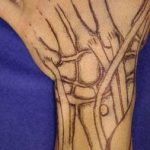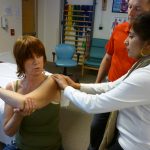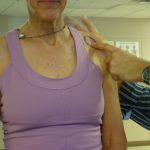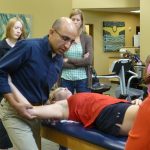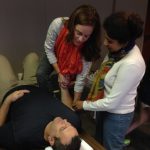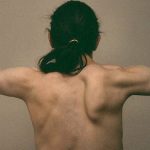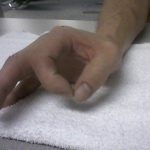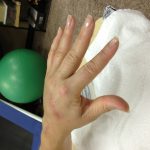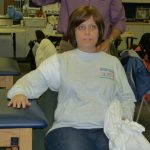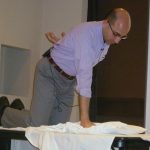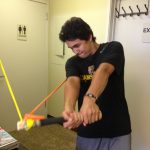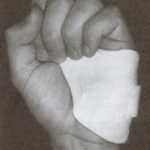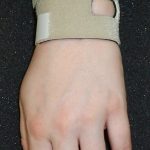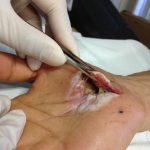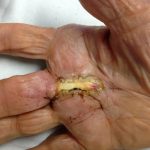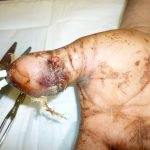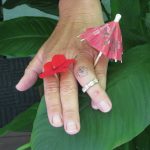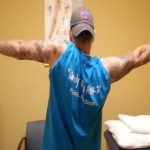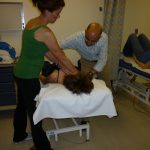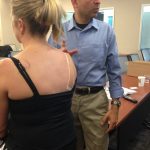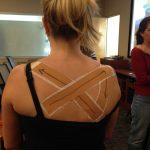
-
-
Manual Medicine for the Upper Quadrant- Taking it to the
next level
-
-
-
Sports Medicine for the Upper Quadrant – Includes Taping and Splinting
-
-
-
Paradigm of differential diagnosis, assessment, treatment of the upper quadrant nerve & orthopedic systems
-
-
-
Comprehensive management of the post surgical arm
-
-
-
Comparative Upper Quadrant Leuko and Kinesio taping
-
-
-
Neural Mobilization of the Upper Quadrant with Myofascial Mobilization
-
-
-
Management of Stiff Arm
-
-
-
A Practical Approach In solving Complex Upper extremity Cases
-
Manual Medicine for the Upper Quadrant- Taking it to the next level
This is a hands-on course that covers the essentials of joint mobilization and myofascial manipulation of the shoulder, elbow and the hand complex. It is specifically designed for the practicing upper extremity specialist/ certified hand therapist. It covers basics of mobilization along with intricate techniques in treating patients with various complex injures.
The underlying principles of manual therapy and the basic science behind the techniques will provide the foundation for the laboratory portion of the course. The lab portion of the course will consist of practical hands-on application of joint and soft tissue mobilization techniques to the upper extremity with progression training. Relevant case studies will be presented that will incorporate the manual therapy skills learned during the course.
Key Speakers:
- Saba Kamal – OTR, CHT
- Ashim Bakshi – MHS, OTR, CHT
Course Duration:
- 2 days
- 15 Hours Contact Session
Course Objective
- To gain knowledge of anatomical structures affected by joint and soft tissue mobilizations
- Ability to perform concise clinical examination of the joints from an arthrokinematic perspective
- Demonstrate psychomotor proficiency in performing joint and soft tissue mobilizations
- Ability to combine soft tissue & specific articulation techniques to affect total treatment of the joints
Course Schedule
Day 1
08:00-09:00 Introduction-Examination of the patient
09:00-10:30 Joint Mobilization principles
10:30-10:45 Break
10:45-11:30 Shoulder functional anatomy (cadaver video, palpation/ drawing, biomechanics)
11:30-12:00 Joint specific treatment techniques for shoulder mobilizations with progressions to improve ROM
12:00-01:00 Lunch
01:00-03:00 Shoulder mobilizations
03:00-03:30 Elbow functional anatomy (cadaver video, palpation/ drawing, biomechanics)
03:30-05:00 Treatment techniques for elbow mobilizations with progressions including movement with mobilization
Day 2
08:00-09:00 DRUJ anatomy and joint mobilization (cadaver video, palpation/ drawing, biomechanics)
09:00-09:30 Wrist functional anatomy (cadaver video, palpation/ drawing, biomechanics)
09:30-10:30 Treatment techniques incorporating wrist joint mobilizations with progressions
10:30-11:00 Hand functional anatomy
11:00-12:30 Techniques incorporating hand mobilizations with progressions
12:30-01:30 Lunch
01:30-03:30 Soft tissue mobilization- Principles and common techniques for the Upper Quadrant, precise activation, palpation, drawing, and techniques with progressions
03:30-05:00 Case Studies
Testimonials
- Excellent ability to explain and demonstrate information, Great techniques that can be applied immediately
- Very informative course for orthopedic settings. The things i liked about this course was the content and more hands on education. I would take another course from Advance Rehab due to great instructors and very patient during Labs
- Speakers were great! Easy to approach and ask questions. Labs provided time to really understand why you do the different mobs. Great Job!
- One if not the most practical courses I’ve taken, Speakers were outstanding – Exceptional knowledge as well as ability to communicate techniques on an understanding level. Thanks for a great experience.
- I like the way you combined mobilization and soft tissue / myofascial release in one course. The way you take time to show proper positioning and application of glides. Great course, easier to interact with speakers for questions and answers.
- It was a great course. It was worth every single penny. You guys are good dynamic duo. J. Chin
- Emphasizes knowledge of anatomical structures for comprehensive clinical assessment- great way to learn
- Very informative and very knowledgeable speakers
- Excellent review of functional anatomy
- Loved the drawing of anatomical structures on each other.
- Loads of good information …..lots of things to process
- Great information….. great mix of labs and theory
Register for the course
Paradigm of differential diagnosis, assessment, treatment of the upper quadrant nerve & orthopedic systems
Physicians have X-Rays / MRI’s to determine the exact cause of pain, therapists do not have that luxury, all we have is our assessment skills to conclude to a diagnosis and perform the correct treatment. For e.g. Every one know how to test for S-L Injuries, but do you know how to determine L-T injuries without an MRI, or determine TFCC tears,lateral epicondylitis vs. Radio humeral arthritis etc. These are just a few examples, join us to learn these and many more techniques to sharpen your assessment skill and improve your treatment response. So don’t shoot in the dark, make an educated assessment and enjoy the fruits of faster recovery and a satisfied patient.
The PT’s have a better understanding of the neck and shoulder assessment however the OT’s do a better job at hand assessment skill, however there are various tests described in the literature that neither are proficient in. This course takes the Certified Hand Therapists, Occupational Therapists, and Physical Therapists, who specialize in treating the shoulder, elbow and the hand complex to the next level of assessment and treatment.
Key Speakers:
- Saba Kamal – OTR, CHT
- Ashim Bakshi – MHS, OTR, CHT
Course Duration:
- 2 days
- 15 Hours Contact Session
Course Objective
- Anatomy: Understand detailed anatomy to perform accurate assessment
- Sites of Compression: Learn the common and not so common sites of nerve compression and their assessment
- Assessment: Perform detailed orthopedic assessment of the upper extremity to tweak out the problem
- Differential diagnosis: As therapists all we have is our assessment skill to rule out an injury. Perform detailed thorough assessment to rule out injuries and conclude the diagnosis, thus communicate with your physician with confidence. Develop an understanding of the etiology , mechanics and treatment of sports injuries afflicting the upper extremity
- Treatment overview: Learn hands on treatment technique, including soft tissue / joint mobilization. Appropriate use of splints, taping etc
- Case Studies: Review Case studies and come to the correct conclusion, establish appropriate plan of care and apply correct modalities and treatment techniques
Course Schedule
Day 1
08:00-09:00 Introduction-Examination of the patient posture, general assessment
09:00-12:00 TOS: Anatomy, compression sites, Nerve assessment, Differential diagnosis, Treatment
12:00-01:00 Lunch
01:00-03:00 Shoulder injuries affecting the shoulder Anatomy, mechanics of shoulder movement, Pathology of shoulder injuries including External / internal impingement, GIRD, RTC tendonitis /tears/ Labrum injuries; Instabilities . Assessment & Differential Dx and therapy intervention
03:00-03:15 Break
03:15-05:00 Anatomy, pathology of Elbow injuries, orthopedic disorders such as tendonitis, PLRI, Radio-humeral involvement. Therapy intervention
Day 2
08:00-09:30 Elbow / forearm nerve
compression sites-Anatomy / pathology and management
09:30-12:00 Wrist injuries Anatomy, mechanics, pathology including but not limited to instability, tendonitis, Differential Dx and therapy intervention
12:00-01:00 Lunch
01:00-05:00 Hand injuries: Anatomy, pathology, assessment of injuries including but not limited to Mallet, Swan Neck, Boutonniere, Jersey finger, UCL, RCL injuries, saggital band injury; Differential Dx and therapy intervention
Testimonials
- Thank you for a fantastic course and subsequent upgrade in my hands on practice since returning. What a great course. i wish I could take it again to absorb more. It has changed how I mentally process what I hear from the patients. I have always listened and documented carefully what they say thinking that it may come in to play later. now I can use most of it immediately (when paired with the testing) to fine tune treatment. Best wishes to both of you, I hope to see more courses offered by you.- L. Hoffman
- Thanks for all your efforts this past weekend. It was a great course. My head is still spinning from all the info. S.Moss
Register for the course
Sports Medicine for the Upper Quadrant
This is a hands-on course that covers the essentials of assessment and treatment of
sports injuries of the shoulder, elbow and the hand complex. It is specifically designed for the practicing upper extremity specialist/ certified hand therapist.
The understanding of functional anatomy, clinical presentations, pathology and mechanics of sports injury will provide the foundation for the laboratory portion of the course, which includes hands on assessment and treatment techniques for the upper quadrant. A practical hands-on application of rehabilitation principles will be provided to accurately determine the best possible combination of a range of interventions in order to restore or enhance athletic function in case of an upper extremity injury.
Key Speakers:
- Saba Kamal – OTR, CHT
- Ashim Bakshi – MHS, OTR, CHT
Course Duration:
- 2 days
- 15 Hours Contact Session
Course Objective
- To gain knowledge of different sports injuries affecting the shoulder, elbow and the hand complex
- Ability to perform concise clinical examination and assessment of the upper quadrant of the athlete patient
- Demonstrate psychomotor proficiency in performing joint and soft tissue mobilizations
- Develop an understanding of the etiology , mechanics and treatment of sports injuries afflicting the upper extremity
- Ability to establish treatment for a given case study involving sports injuries with the specific manual therapy, exercise regime, taping and splinting technique
Course Schedule
Day 1
08:00-09:00 Introduction-Examination of the athlete patient
09:00-12:00 Shoulder injuries affecting the athlete
12:00-01:00 Lunch
01:00-03:00 Elbow injuries affecting the ath-lete, tendonitis, nerve injury, PLRI, Radio-humeral involvement
03:00-03:30 Break
03:15-04:00 Taping Intro : Taping lab for the shoulder conditions
04:00-05:00 Taping lab- Elbow and the wrist conditions TFCC/ UCL taping
Day 2
08:00-10:00 Wrist injuries affecting the athlete, wrist instability, tendonitis, nerve injuries
10:35-12:30 Hand injuries affecting the athlete, Mallet, Swan Neck, Boutonniere, Jersey finger, UCL, RCL injuries
12:30-01:30 Lunch
01:30-02:00 Dorsal Mallet Splint, Relative motion splint, RCL Index splint
02:00-02:30 Splint Lab
02:30-03:00 DISI splint
03:00-03:30 Splint Lab
03:30-04:00 Mid Carpal Instability splint / DART throwing
04:00-04:30 Splint Lab
04:30-05:00 ECU Subluxation/ TFCC splint or Hand Fracture bracing
Testimonials
- I have attended many courses, but the information i get at advanced rehab seminars is something i can apply the very next day. I have attended their differential diagnosis and sports medicine talks
- Excellent course- very comprehensive information presented. I will make sure to attend your other courses as well
- The 2 – instructor format works very well. The shoulder taping and hand splint lab was especially good.Wish we had more time than 2 days!!!!!!!!!
- I have worked with the athlete population before. this course was truly eye opening
Register for the course
Comprehensive management of the post surgical arm
A Hands-On course that covers the essentials of surgery and rehab of the shoulder, elbow, wrist and the hand complex.
Learn
Normal / pathological anatomy in the stiff UE
Clinical examination of post surgical extremity
Knowledge of post surgical wound, skin grafts etc
Knowledge of precaution, contraindications of the latest surgeries on the upper extremity
Learn combination of joint & soft tissue mobilization,
Self stretches and exercises
Splinting & taping to treat the post surgical upper extremity problems successfully
Key Speakers:
- Saba Kamal – OTR, CHT
- Ashim Bakshi – MHS, OTR, CHT
Course Duration:
- 2 Days
- 14.5 Hours Contact Session
Course Level:
- Intermediate
Course Objective
At the completion of the course the participant will:
- Gain and demonstrate knowledge of the normal and pathological anatomical structures of the upper quadrant.
- Enhance ability to perform and demonstrate concise clinical examination of the post-surgical upper extremity
- Develop and demonstrate an understanding of concepts relating to healing of soft tissues, tendons and bones and their relationship to the post-surgical protocols
- Develop and demonstrate the ability to assess normal v/s pathologic structures and perform hands-on assessment including use of joint and tendon specific provocative testing during lab sessions.
- Develop an understanding of the various surgical procedures involving the upper quadrant and associated precautions.
- Develop and demonstrate the ability to establish a patient and diagnosis specific treatment plan that would include components of joint and soft tissue mobilization, therapeutic exercises, splinting and taping to treat the post-surgical upper extremity disorders, successfully.
Course Schedule
Day 1
08:00-09:00 Introduction Anatomy of the shoulder
09:00-09:30 Anatomy Lab
09:30-11:00 Shoulder surgeries eg: Shoulder Fractures/ dislocations, RTC, Labrum pathology, decompression etc precautions and treatment
11:00-11:15 Break
11:15-12:30 Shoulder Mobilization joint and soft tissue Lab and exercise lab
12:30-01:30 Lunch
01:30-02:00 Anatomy of the elbow
02:00-03:30 Elbow surgeries eg: Supracondylar fx, Radial head fx / replacement, Submuscular transposition, Lateral epicondyle release, Biceps repair UCL repair, PLRI surgical protocols, precautions and its treatment
03:30-05:00 Elbow – Joint and soft tissue mobilization lab and exercise lab
Day 2
08:00-08:30 Anatomy of the wrist lab
08:30-08:45 Biomechanics of the wrist
08:45-10:30 Wrist Pathology SL repair (Blats Capsulodesis), TFCC repair, Wrist fracture, Scaphoid fx, ECU stabilization
10:30-10:45 Break
10:45-12:00 Wrist mobilization joint and soft tissue lab and exercise lab
12:00-01:00 Lunch
01:00-01:40 Introduction to Hand anatomy / mechanics
01:45-03:00 Pathology as it relates to hand injuries
Fractures, dislocations, secondary deformities causing stiffness of the hand Crush hand, Boxers Fx, UCL thumb, RCL Index, PIP Fx / Dislocation, MCP capsulotomy, saggital band repair
03:00-03:10 Break
03:10-03:40 Wound care basics
03:40-04:10 Assessment and treatment of the hand with a hands-on lab
04:10-04:30 Case Studies
Register for the course
Management of Stiff Arm
The restoration of motion to the joints of the UE is one of the most common problems in rehabilitation. Overcoming stiff and painful joints is essential if the hand is to function properly, and this salient fact creates a formidable challenge for the hand therapist. In this talk, we will review the causes and treatment for stiff shoulder, elbow wrist and hand
- Shoulder: Adhesive Capsulitis, RTC repair, S/P labrum repair
- Elbow: Elbow fractures, ligament repairs
- Wrist: wrist fracture, CRPS, PRC
- Hand: Certain afflictions of the intrinsic muscles of the hand, Hand Fracture, crush hand
Secondary deformities are produced by the disturbance of the tendinous motion, loss of ligamentous control, which alters skeletal alignment. Secondary deformities could be divided into a) primary pathology or b) secondary changes.
Primary pathology may directly involve the joint, skeletal structures, tendons or ligaments
Whereas, the secondary pathology can be caused by Poor management of injuries, causing fixed deformities or A result of slow progression of missed progressive deformities that may result in management problem. Trauma, or disease process affecting the hand, requiring conservative or surgical management. Adhesion of the tendons, and/or contracture formation
The talk will include management of stiff arm with mechanically balanced positioning of the various joints following injury, surgery or disease process to elevate, reduce or minimize abnormal forces along with controlled mobilization that prevents the secondary deformities and maximizes the functioning of the arm.
Key Speakers:
- Saba Kamal – OTR, CHT
- Ashim Bakshi – MHS, OTR, CHT
Course Duration:
- 2 days
- 14 CEU’s
This is a hands-on course that covers the essentials of joint mobilization and myofascial manipulation of the shoulder, elbow and the hand complex along with knowledge of splinting and modalities to treat the stiff arm. It is specifically designed for the practicing upper extremity specialist/ certified hand therapist to critically think and apply clinical reasoning to treat the stiff arm by using the above techniques. It covers intricate techniques to allow for decision making in treating patients with various complex UE injures.
The Underlying principles of wound healing, splinting and manual therapy provide the basic science behind the techniques that provides the foundation for the laboratory portion of the course. The lab portion of the course will consist of practical hands-on application of joint and soft tissue mobilization techniques to the upper extremity.
Relevant case studies will be presented that will incorporate the manual therapy skills learned during the course and clinical reasoning for application of specific modalities and splinting.
Course Objective
- To gain knowledge of anatomical / pathological structures that can be affected by joint and soft tissue mobilizations. Also, utilizing the correct treatment tool in improving the ROM in patients with stiff arm
- Ability to perform concise clinical examination of the joints from an arthrokinematic perspective for the pathology at hand.
- Demonstrate clinical reasoning in applying modalities and orthosis along with performing joint and soft tissue mobilizations on the pathological upper extremity.
Course Schedule
Day 1
07:45-08:00 Introduction
08:00-09:00 Joint/ Soft tissue Mobilization principles
09:00-10:00 Principles of splinting and wound healing
10:00-10:15 Break
10:10-11:00 Pathology of Stiff Shoulder: reasons for secondary deformity / biomechanics of pathologically stiff shoulder. Covers adhesive capsulitis, proximal humerus fracture, stiffness s/p RTC repair, Labrum A/P repair
11:00-12:00 Joint specific treatment techniques for shoulder mobilizations with progressions to improve ROM (movement with mobilization incorporated), soft tissue mobilizations along with use of modalities etc. Lab incorporating clinic reasoning behind techniques used
12:00-01:00 Lunch
01:00-02:30 Shoulder Lab with case studies
02:30-03:30 Elbow pathology and biomechanics of stiff elbow, covers Supracondylar fracture, terrible triads etc
03:30-03:45 Break
03:45-05:00 Treatment techniques for elbow mobilizations with progressions including movement with mobilization, soft tissue mobilization, modalities / splinting etc. Clinical reasoning discussed behind each technique utilized
05:00 Adjourn for the day/Questions
Day 2
08:00-09:00 Elbow Lab with case studies
09:00-09:30 PRUJ / DRUJ pathology and joint mobilization, biomechanics splinting modalities
09:30-10:30 Wrist pathology, biomechanics, includes wrist fracture management, CRPS
10:30-10:45 Break
10:45-12:00 Treatment techniques incorporating wrist joint mobilizations with progressions, soft tissue mobilization splinting / modalities discussion with case studies
12:00-01:00 Lunch
01:00-02:00 Hand pathology, intrinsic tightness, management of boutonniere, stiff hand
02:00-03:30 Techniques incorporating hand mobilizations with progressions, soft tissue management/ specific strengthening techniques, splinting ideas, modalities etc with case studies
03:30-04:00 Case Studies Questions/ Adjourn
Diagnosis Considered for this course
Shoulder
-
-
- Adhesive capsulitis
- Proximal humeral fractures
- Post surgical joint issues as related to massive cuff repairs and proximal humeral fixation
- Considerations for post SLAP repairs
-
Elbow
-
-
- Elbow dislocation
- Post fracture management- supracondylar, and olecranon fracture
- Management of the terrible triad
-
Wrist and hand
-
-
- Post fracture rehab
- Status post wrist ligamentous repair
- CRPS
- Intrinsic tightness of the hand
-
Register for the course
Neural Mobilization of the Upper Quadrant with Myofascial Mobilization
Have you ever wondered why some patients do not report any symptoms during neu-rological tension/ mobility testing but shortly after release, or questioned if the nerve is truly gliding when given an HEP If you have questioned yourself about the Intra-neural adhesion’s when nerve gliding exercises are given and worried if you were in-fact stretching the nerve than gliding it, then come join us to learn how to discern the areas of adhesion’s and to safely glide the nerve without stretching the nerve at its entrapment site This course questions the basic philosophy of nerve gliding exercises and ensure that the nerve gliding that is done is actually therapeutic. The nerve is gliding through the adhesion’s of its surrounding tissues and entrapment sites caused by fibrosis and not stretching and creating further damage.
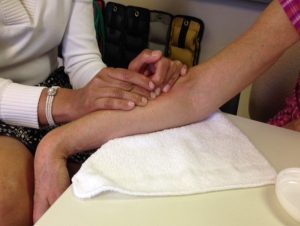


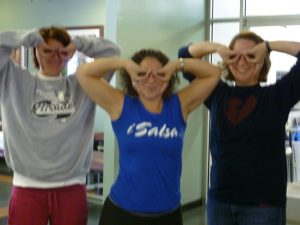
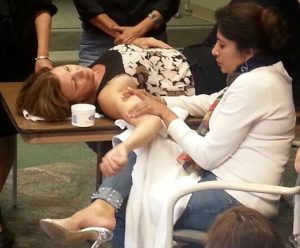
Course Outline
- Introductions Nerve construct
- Basics of ULTT Break
- ULTT Brachial Plexus
- Brachial Plexus Anatomy
- Myofascial techniques Lab
- Taping Lab
- Prescribing HEP
- Ulnar Nerve Anatomy
- ULTT Ulnar Nerve
- Myofascial techniques
- Taping Lab
- Prescribing HEP
- Radial Nerve Anatomy
- ULTT Radial Nerve Bias
- Myofascial techniques Radial Nerve
- Taping Lab
- Prescribing HEP
- Median Nerve Anatomy
- ULTT median nerve bias Myofascial technique with median nerve glide
- Taping lab exercise prescription
- Case studies and Practice case scenarios Q and A
- Labs include
- Assessment of obstruction to Nerve from gliding
- Myofascial technique with Nerve glide
- Leuko/Kinesio taping
- How to prescribe exercises for nerve glide
Key Speakers:
- Saba Kamal – OTR, CHT
- Ashim Bakshi – MHS, OTR, CHT
Course Duration:
- 2 days
- 12 CEU’s
Course Objective
-
- Learn the basics and assessment techniques of Upper Limb Tension Tests (ULTT)
- Learn the difference between Neural Flossing and Neural Stretching
- Learn how to find obstructions to neural gliding
- Learn the Myofascial techniques with Nerve glide to release the nerve at various entrapment sites to ensure gliding of the nerve and prevent tensioning the nerve.
- Learn how to establish customized exercise program for each patient based on the entrapment site and prescribe a home exercise program to enhance the results achieved in therapy via Myofascial with Nerve glides.
- Also learn the different neural taping (Leuko/ Kinesio) to reduce the entrapment/ pressure on the nerves.
- Find out more on how you can retain the effects of the gains made in therapy via taping (Leuko/ Kinesio) and exercises, thus a faster recovery.
- Bring your own Leuko/ Kinesio tape for practice.
Register for the course
A Practical Approach In solving Complex Upper extremity Cases
Developing a hierarchical approach to solving difficult Upper extremity symptomology


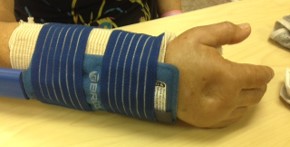

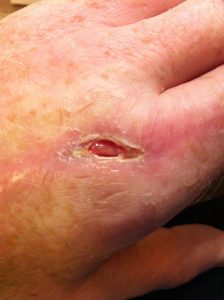
This course will entirely focus on case presentations addressing different issues at various stages of pathology/injury to the upper extremity, rooted in the concepts of anatomy, pathophysiology and bio-mechanics. Treatment interventions will be formulated based on latest evidence based research and real world clinic- based practical applications. The attendees will develop an understanding of the evaluative process and on how to break down the various components of the assessment of a complex case. The attendees will develop an understanding on formulating a hierarchical treatment plan contingent on patient’s clinical presentation and assessment, which will include customized exercises based on knowledge of applied physics and designing appropriate splinting regimen during varied stages of injury based on tissue assessment and impairment.
Develop an understanding in identifying the presenting problem by understanding the complexity of anatomy and pathophysiology of the problem at hand
CEU offered: 12
Course Objective:
The attendee will
1) Developing a hierarchical approach to solving difficult upper extremity symptomology.
2) Identifying the presenting problem through a thorough understanding of functional anatomy, pathophysiology and biomechanics of the upper quadrant.
3) Developing a thorough assessment plan by breaking down the evaluative process into sub-tasks to establish a more effective treatment plan that follows a hierarchical process of connective tissue healing
4) Developing treatment strategies that are tailor based on patients evaluative findings and presentation of the symptomology.
-
The intervention will be derived from sound clinical reasoning and evidence based research
-
Design customized exercises based on knowledge of applied physics .
-
Design appropriate splinting during varied stages of injury based on tissue assessment and impairment.
Key Speakers:
- Saba Kamal – OTR, CHT
- Ashim Bakshi – MHS, OTR, CHT
Outline /Agenda
COURSES SIMILAR TO THESE AND NOT EXACTLY AS NOTATED BELOW MIGHT BE PRESENTED BASED ON TIME AND LATEST RESEARCH
Day 1
8:30 am – 9:45 am. Introduction. Principles and Pathophysiology of the healing tendon, bone and nerve- from theory to clinical applications. Principals that guide our treatment, critical thinking in devising tailor made treatment interventions based on diagnosis and surgical intervention
Apply reasoning and applied physics with splinting. Learn how joint mobilization and soft tissue mobilization assists in functional improvement
10:00 am to 12:30pm – Shoulder cases
- 4 weeks post motor vehicle accident with brachial neuritis presents with extreme hypersensitivity around the neck and no use of arm/ hand
- Shoulder proximal humerus fracture with minimal displacement – conservative management.
- Shoulder humeral head fracture with failed ORIF and eventual hemiarthroplasty. Functional passive motion but no active ROM.
- Rotator cuff repair with involvement of the thoracic inlet
12:30pm – 1:30 pm – Lunch
1:30 pm to 3:45 pm – Elbow Cases
- Distal Humerus Fracture supracondylar fracture 6 weeks post op goes through HO release and results in all nerves paralyzed from elbow down. Resolving elbow stiffness while managing paralyzed hand.
- Terrible triad at the elbow, presented 4 months after injury, started therapy 4 weeks post op with presentations of stiff shoulder and an Immobile elbow/ forearm
- Distal radius / ulnar styloid fracture with ORIF
4:00 pm to 5:30pm
Case presentations by attendees. Cases will be provided
DAY 2
8:00 am to 11:00 am – Hand cases
- TFCC repair transitioning into complex regional pain syndrome
- Carpal instability- Conservative management
- Crushed hand
- Meta carpal fracture- ORIF
- Flexor tendon repair – Rehabilitation at different stages
- PIP fracture- ORIF – the enigma posed by the little finger
11:00 am to 12:00 pm
Case presentation by attendees
Register for the course
Comparative Upper Quadrant Leuko and Kinesio taping
We as providers all have this problem of liking a certain technique and getting
stuck with it. There may be times when the other technique may work better but we forget all about it because we have been using one and at times not have enough hands on
experience to use it when we need it.
This course is designed to take you out of the box and get you to play with both the taping methods when treating the same injury.
One technique may work well at the beginning of the rehab but as we progress we
may have to apply the other technique or tape. Or we may choose to use different tape in different setting, such as clinic, home or on the field. This course will take you though some of the diagnosis we treat for the upper quadrant and get a hands-on feel for both the taping methods A practical hands-on application of rehabilitation principles will be provided to accurately determine the best possible combination of taping interventions in order to restore or enhance function in an upper extremity injury.
Key Speakers:
- Saba Kamal – OTR, CHT
- Ashim Bakshi – MHS, OTR, CHT
Course Duration:
- 2 days
- 12 Hours contact sessions
Course Objective
- We as providers all have this problem of liking a certain technique and getting stuck with it
- There may be times when the other technique may work better but we forget all about it because we have been using one and at times not have enough hands on experience to use it when we need it
- This course is designed to take you out of the box and get you to play with both the taping methods when treating the same injury
- It may be well at at the beginning of the rehab one technique may work better but as we progress we may have to apply the other technique
- This course will take you though some of the diagnosis we treat for the upper quadrant and get a hands-on feel for both the taping methods
Course Schedule
Day 1
08:00-08:45 Basics of Leuko taping
08:45-09:30 Basics of Kinesio taping
09:30-09:40 Break
09:40-10:00 Demonstration of 1st Taping Technique: Shoulder Postural Taping and Kinesio sports taping
10:00-10:30 Lab Time
10:30-11:00 Demonstration of 2nd Taping Technique: Scapular Taping for posture early and late stages with leuko and kinesio
11:00-11:30 Lab Time
11:30-12:00 Demonstration of 3rd Taping Technique: Shoulder Impingement Taping Leuko / sports taping
12:00-12:30 Lab Time
01:30-02:00 Demonstration of 4th Taping Technique: Cubital Tunnel Taping Leuko and Kinesio
02:00-02:30 Lab time and Q & A
02:30-03:00 Demonstration of 5th Taping Technique: Elbow Instability taping Leuko
03:00-03:30 Lab time
03:30-03:40 Break
03:40-04:10 Demonstration of 6th Taping Technique: Tennis Elbow taping / radial tunnel Leuko and kinesio
04:10-04:40 Lab time 2 Techniques
04:40-05:00 Case studies / question and answer
Day 2
08:00-08:30 Demonstration of 7th Taping Technique: Triangular Fibrocartilage Complex taping 2 Techniques, leuko and kinesio
08:30-09:00 Lab time
09:00-09:30 Demonstration of 8th Taping Technique: Carpal Tunnel Taping 2 techniques Leuko
09:30-10:00 Lab time
10:00-10:10 Break
10:10-10:40 Demonstration of 9th Taping Technique: Dequervains taping Leuko and kinesio
10:40-11:10 Lab time
11:10-11:40 Demonstration of 10th Taping Technique: Intrinsic Taping
Demonstration of 11th Taping Technique: Trigger finger Taping
11:40-12:00 Lab time
12:00-12:30 Case studies / Question & Answer
Register for the course
Practical application of Modalities for the Upper Quadrant (PAM CERTIFIED)
This is a hands-on course that covers the essentials of modalities necessary to treat the shoulder, elbow and the hand complex. It is specifically designed for the practicing upper extremity specialist/ certified hand therapist to think critically and apply clinical reasoning in the application of physical agent modalities to correctly treat the upper extremity with modalities to achieve optimal clinical results. It covers the basic physical, physiologic and therapeutic principles of each modality and relates these to the clinical decision-making process involved in treating patients with various and complex UE disorders. Following a discussion of the basic science and principles behind the application of each modality will be a laboratory portion of the course. The lab portion of the course will consist of practical hands-on application of the modalities to the management of upper extremity disorders, including relevant case studies that will help hone clinical reasoning skill in the application of the specific modality to treat a specific diagnosis.



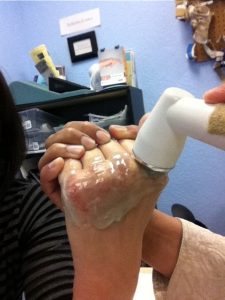

- Describe the physical and physiologic principles in the therapeutic application of modalities for the management of upper extremity disorders.
- Discuss the effects of the modalities on clinical problems, including: pain, swelling, inflammation, muscle atrophy, ROM or wound healing for the Shoulder, Elbow Wrist and Hand
- Demonstrate clinical reasoning in the selection and safe, effective application of modalities to pathologies of the upper extremity.
- Demonstrate safe and effective application of each modality to representative cases
Key Speakers:
- Charles Costello, P.T., PhD, C.H.T.
Course Duration:
- 4 Days
- 30 Hours Contact Session for PAM (Part 1: 16 hrs, Part 2: 14 hrs)
Course Schedule
Day 1 |
Minutes | ||
| 7:30 | Pre test / registration | 30 | |
| 8:00 | Physical agents in occupational therapy | Theory | 240 |
| 8:30 | Physical principles of electricity and electric currents | ||
| 9:30 | Therapeutic electric currents – nomenclature & characteristics | ||
| 10:30 | Electro-physiology of excitable tissues – nerves & muscles stimulation | ||
| 12:00 | Lunch | ||
| 1:00 | Lab: Electrotherapy equipment, currents and parameters | Understanding Electrical stimulation, its principles and electrotherapeutic currents | 60 |
| 2:30 | Principles of pain control with electrotherapy | 60 | |
| 3:30 | Lab: pain control with electrotherapy – TENS, interferential, Hyperstimulation analgesia, H-wave | Electrical stimulation of muscles innervated in management of upper extremity disorders | 90 |
| Electrotherapy for pain management in the upper limb Use of TENS and its application: | |||
| Different applications for localized Vs. radiating pain in the UE | |||
| Interferential and Pre-modulated currents. | |||
| H-wave basics | |||
| 5:00 | Q & A | 30 | |
| 510 |
Day 2
| Neuromuscular Electric Stimulation | ||||
| 8:00 | Principles & therapeutic applications of electrical stimulation of muscle – innervated & denervated | Use of NMES on disused shoulder and other musculature, to increase strength. | 150 | |
| 10:30 | Lab: Electrical stimulation of muscle with clinical scenarios: Learn the motor points to activate certain muscles / groups. | Use of NMES to increase ROM. | 90 | |
| Use of NMES on to increase strength in wrist and hand strength and to prevent adhesions, to allow for pull through of the tendons (FDP/ FDS FPL, EPL etc). Case Studies: Learn the various settings to activate different muscle tendon units in the UE for improving scapular control, to increasing strength in the RTC. From triceps activation to extensor recruitment in wrist drop. Or to initiate tendon pull through to prevent adhesions, or in cases of ulnar nerve palsy enhancing intrinsic function. | ||||
| 12:00 | Lunch | |||
| 1:00 | Biofeedback | 90 | ||
| Monophasic & micro current applications | Monophasic applications for wound healing, edema & inflammation, Hivolt under water; iontophoresis | |||
| 2:30 | Lab: Biofeedback | 120 | ||
| Monophasic & micro current applications | ||||
| 4:30 | Q and A | 30 | ||
| 480 |
Day 3
| 8:00 | Physical principles of heat and heat transfer | Conduction convection theories | 30 | |
| 9:00 | Inflammation & healing | Learn the principles of superficial thermal agents | 60 | |
| 10:00 | Physiologic & therapeutic effects of heat & cold: (hot packs, paraffin, fluidotherapy) (cold pack, ice massage, contrasting baths, vasopneumatic devices ) | 60 | ||
| 11:00 | Superficial heat & cold applicationsVasopneumatic devices | How superficial modalities like heat and ice work, | 60 | |
| Case studies | ||||
| 12:00 | Lunch | |||
| 1:00 | Lab: Superficial heat & cold applications Vasopneumatic devices | Heat & cold (hot packs, paraffin, fluidotherapy; cold pack, ice massage, contrast baths, vasopneumatic devices) Practical application: The best modality for the case at hand using evidence based research, clinical expertise: When to use it, which one & how to use it to increase ROM, or reduce swelling (with Wrap/ elevation) etc | 90 | |
| 2:30 | Therapeutic diathermies – shortwave & ultrasound | Understanding principles of SWD, US and phonophoresis | 120 | |
| Application of US to improve ROM, manage scar and adhesions, tendonitis in different regions of the Upper extremity | ||||
| Anti Inflammatory modalities: for Tendonitis: Phonophoresis; Pulsed US, SWD; | ||||
| 4:30 | Q & A | Case studies, problem solving cases with thermal modalities | 30 | |
| 450 |
Day 4
| 8:00 | Light Therapy | Physical and physiological effects ofLaser & LEDs | 120 |
| Physiological effects & therapeutic applications of Laser & LEDs | |||
| 10:00AM | Lab: US & Light applications | Application of US to improve ROM, manage scar and adhesions, tendonitis in different regions of the Upper extremity | 120 |
| Application of LLLT | |||
| 12:00 | Lunch | ||
| 1:00 | Clinical pharmacology: | Pharmacological agents used with phonophoresis and Iontophoresis | 30 |
| 1:30 | Integration of physical agents with other therapeutic & purposeful interventions. | 60 | |
| 2:30 | Questions | 30 | |
| 3:00 | Post test & course assessment | ||
| 360 | |||
Total Minutes |
1800 |
Lab portion allows for time to practice with each of these modalities.
Contact Hours: 30
